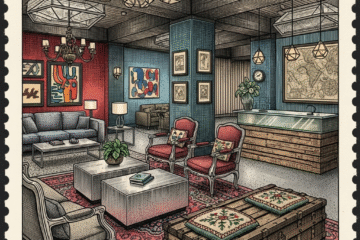Sustainability is no longer a design trend — it is a responsibility. At Hicks Furniture, sustainability begins in the workshop, where each decision, from timber selection to finishing methods, is guided by respect for the environment and the enduring value of craftsmanship. By combining traditional joinery with modern sustainable practices, Hicks Furniture continues a legacy of quality that lasts generations while contributing to a more responsible future for Irish design.
The Meaning of Sustainable Joinery
Sustainable joinery means more than using renewable materials. It involves creating furniture that endures — pieces that can be repaired, refinished, and enjoyed for decades. This approach reduces waste, conserves resources, and preserves the integrity of both the material and the maker’s craft. Hicks Furniture’s philosophy is simple: when furniture is built to last, sustainability follows naturally.
Responsible Sourcing of Materials
Every sustainable design begins with the right material. Hicks Furniture sources hardwoods such as oak, ash, and walnut from certified suppliers who adhere to the Forest Stewardship Council (FSC) and Programme for the Endorsement of Forest Certification (PEFC) standards. These certifications ensure that forests are managed ethically, protecting biodiversity and supporting replanting.
Timber is selected for its quality and origin, with a preference for European and Irish sources to minimize transport emissions. By choosing regional suppliers, Hicks supports local economies while reducing its carbon footprint.
The Value of Longevity
A well-made piece of furniture represents the opposite of disposable culture. In the hospitality industry, where wear and tear are inevitable, longevity is a sustainable strategy. Hicks Furniture builds contract-grade furniture that withstands heavy daily use without compromising beauty or comfort. Each joint, surface, and finish is designed to maintain integrity over time. Longevity not only conserves material resources but also provides greater long-term value to clients.
Eco-Friendly Finishes
Finishes protect and enhance natural materials, but they must also safeguard the environment. Hicks Furniture uses low-VOC (volatile organic compound) and water-based lacquers, natural oils, and eco-certified stains that reduce harmful emissions. These finishes improve indoor air quality in commercial spaces while maintaining the tactile and visual richness of natural wood. Each surface is treated with care to achieve both durability and environmental responsibility.
Waste Reduction and Resource Efficiency
Sustainability extends to how materials are handled within the workshop. Offcuts and wood shavings are repurposed or recycled, and production processes are optimised to reduce waste. Digital cutting systems and efficient material nesting ensure maximum yield from every sheet or plank. These practices reflect a broader commitment to responsible manufacturing that benefits both the environment and the business.
Design for Disassembly and Repair
Hicks Furniture designs with the future in mind. Whenever possible, components are constructed for easy maintenance, refinishing, or replacement. This approach extends the lifespan of each piece and allows for refurbishment rather than disposal. Furniture that can adapt to new interiors or be reconfigured supports the principle of circular design — an increasingly important aspect of sustainability in the modern built environment.
Local Craftsmanship, Global Awareness
Manufacturing locally in Dublin allows Hicks Furniture to maintain control over quality while reducing transport emissions. Clients benefit from traceability — knowing exactly where materials come from and how they are processed. This transparency has become a hallmark of ethical business practice in both Irish and European markets. Sustainable Irish craftsmanship demonstrates that environmental awareness and aesthetic excellence can coexist seamlessly.
Meeting Industry Standards
Hicks Furniture aligns its practices with international sustainability frameworks such as LEED (Leadership in Energy and Environmental Design) and BREEAM (Building Research Establishment Environmental Assessment Method). Working with architects and designers who pursue green certification, the company provides documentation on materials and finishes to assist in environmental compliance and project accreditation.
The Enduring Beauty of Natural Materials
Sustainability also lies in emotional connection. People value and care for furniture that feels authentic and made with purpose. The warmth of natural timber, the precision of joinery, and the tactile comfort of a hand-polished finish invite appreciation and longevity. Hicks Furniture believes that sustainability is as much about creating emotional durability as it is about physical endurance.
Building a Sustainable Future
For Hicks Furniture, sustainability is not an added feature — it is embedded in every decision. From responsible sourcing to refined craftsmanship, each project contributes to a more thoughtful approach to design and manufacturing. The result is furniture that stands the test of time, both in strength and in spirit, continuing the company’s legacy of excellence while protecting the world it depends upon.
Forest Stewardship Council. (2023). Responsible forestry and certification standards.https://www.fsc.org
BREEAM. (2024). Sustainable building certification guidance.https://www.breeam.com
Leadership in Energy and Environmental Design (LEED). (2024). Materials and resources credits.https://www.usgbc.org/leed
The Irish Times. (2013, June 15). The durable appeal of a prince of pastiche.https://www.irishtimes.com





